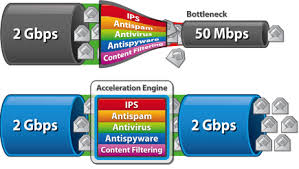For so many years the first attempt used to make a computer faster was to add ram “Random Access Memory.” Over the years I have used a specific way of explaining to clients how ram works. Draw a circle and imagine that the whole made up the entire internet that could enter your computer. Using this example if you clicked on anything the delivery of information would be instantaneous. Imagine if this whole took 30 gigabytes of ram memory to be immediate and you had 4 gigabytes of ram installed, that would be a speed bottleneck. This does not mean that you need 30 gigabytes of ram to achieve all the speed you need. Most normal users really only need between 6 and 8 gigabytes. This is because the normal tasks only need a certain amount of ram to deliver information at a reasonable speed. This includes surfing the web, office tasks and average video streaming. If the user is a gamer or does a lot of heavy photo editing the ram needs will increase. Most computer techs I talk to agree that 16 gigabytes of ram should handle the needs of even the most intensive users. This is because there are other factors to take into account besides ram. Also most computers have a limit on how much ram can be effectively used. Keep in mind that I am referring to general use. It is important to really know if you or other people who use the computer are going to use it for gaming. So many people will say “we only use a computer for light gaming.” What does light gaming really mean? If you go online and check what specs you need to have to play a certain game, you will find that they also want to know what level you want to play at. You need to know how many frames per second is required for the maximum level. When talking about gaming, graphics installed on the computer play a major factor. Computers can have dedicated graphics ( a separate graphics card) or integrated or shared graphics ( shared graphics form the processor.) Most laptops (but not all) have shared graphics installed. With shared graphics the processor is the determining factor. A desktop can have dozens of different dedicated graphics cards installed. If you think you might do some regular gaming, I would suggest buying a desktop. They do make gaming laptops but these are very expensive and still have limitations.
The newest addition to increasing speed is the now common use of a solid state hard drive as opposed to a mechanical hard drive. If you were to open a mechanical hard drive and you are over 50 years old you would see a familiar site. It looks like a record turntable with a silver platter and a needle running across the record. This needle does not touch the platter but it does move as well as other parts of the hard drive. So the mechanical hard drive has moving parts but it is still pretty fast at moving information along. The solid state hard drive has no moving parts and is somewhere between 5 and 10 times as fast as the mechanical hard drive. Also with no moving parts the longevity of a solid state hard drive should be better than the life span of a mechanical drive. This is not an absolute and opinions vary. Solid state hard drives need a certain amount of ram to make a difference. If you have a little netbook with 2 GB of ram the addition of a SSD would be a waste of money. You need at least 4GB of ram to see a big difference. The addition of a solid state drive removes the possible bottleneck of a slow hard drive. Some tasks are ram intensive while others depend more on the processor speed.
The next possible bottleneck is your processor. Most applications are designed to run better and faster on a dual core processor. The clock speed of the processor is not as important for the average user. The processor clock is measured in GHz after the processor name. So if a dual core is faster than a single core a quad core must be faster than a dual core. Not always! It depends on what you do with your computer. If you want to work on a word document while watching a movie and you are streaming, my money would be on the high clock speed dual core 3.0GHz or more. I you find yourself wanting to have 15 windows open while you are doing some heavy photo editing I would buy a quad core. Just remember that all dual and quad core processors are the same. If you are an average user and have a third generation or newer Intel icore 3 dual core you will have plenty of power. If you are a gamer or other heavy user get a fifth generation or newer Intel icore 5 or even 7 processor. AMD 10 series is a good processor as well but I like Intel. Remember! you can always add ram and upgrade to an SSD but it is more difficult and sometimes impossible to upgrade the processor.
The last bottleneck problem is system configuration. Make sure someone that knows what they are doing configures your system if you suspect a problem. The newer computer you have the more a good tweak could make your system run faster.

